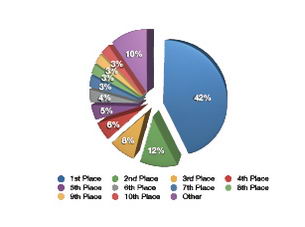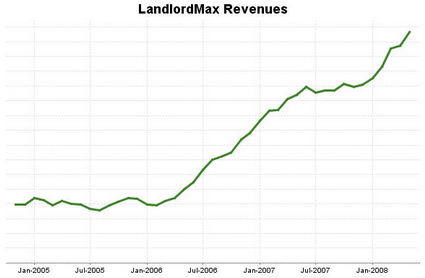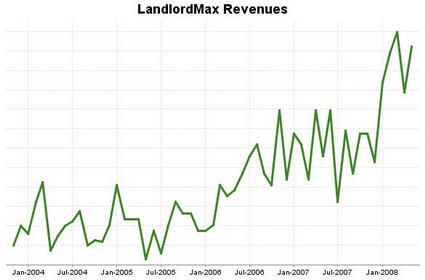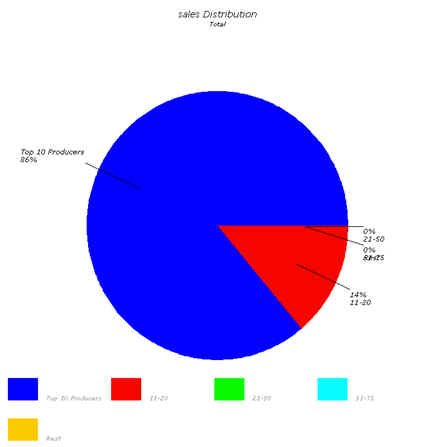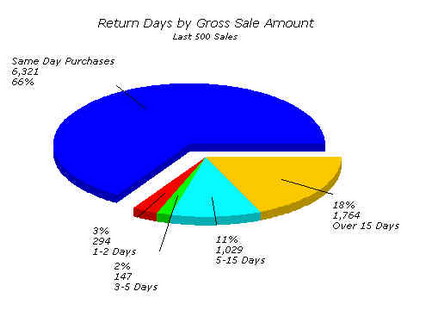The Secret to Making ANY Computer Safe
Have you ever been at someone else’s house and needed to use their computer to quickly check something on the internet but where worried about the security of their system? If it was infected with viruses, spyware, or what have you? What about using your credit card to buy something. What if you’re on vacation and needed to use it for business purposes, or just to quickly check something within your bank account?
I can tell you that this completely terrifies me. I’ve seen way too many computers completely infected with garbage. Computers that I wouldn’t even do anything at all on, not even save a text document for fear of keystroke loggers.
Yes it can be that bad! Less than a year ago I was at a someone’s house where the computer was still running Windows 98. It had no router, not even a software firewall. No antivirus. Nothing. Connected directly to a broadband modem. This person was complaining that their computer was really slow and kept crashing all the time. And I mean all the time! When I asked them about even just upgrading the OS, I got some funny looks, which is when I realized it wasn’t even worth asking about a firewall router. It’s a good thing I didn’t need to use his computer to connect to the internet. I can’t even begin to imagine all the possible harm I could have self-inflicted!
Although this is a more extreme case, it’s not that extreme. Another person I know was using an older version of Windows XP, not even SP1. They couldn’t be bothered to upgrade. No router, nothing. Direct connection to a broadband modem. As you can imagine the computer was pretty much useless, but they kept using it thinking the computer hardware was the issue. They even did their banking on it!!!
As a quick divergence, a lot of people are heralding the Mac as the solution to their security and performance issues. But that’s completely false, you’ll still encounter the same issues. Like everything new, there are less issues right now because if you buy a Mac right now you’re fairly up to date (plus there haven’t been as many targeted attacks yet). But wait another year or two as these people don’t update their operating system like they should. Especially if they also connect directly to broadband modem boxes. It’s only a matter of time before all these brand new shinny macs also start to come to a crawl.
The fundamental issue is not the OS but the people. And it’s not that they’re idiots filling ID-10-T forms all day, it’s that they don’t know any better. Upgrading and security hasn’t been ingrained in their brains. They hear about it, but they don’t really get it, at least not yet. Unlike the concept of changing the oil in your car every x miles, upgrading is still not a fully understood benefit. It’s not really appreciated, so many people just don’t do it. Plain and simple.
But getting back to our discussion, what can you do to use any computer to safely access the internet? Two things really. Well technically you could probably get away with one, but just to be extra safe I recommend doing both.
1. Use a Live-CD OS to boot the computer.
For those of you who aren’t familiar with this concept, what it means is that you can create a CD that will boot the operating system from the CD drive. A great example of this, and the one I use, is the Knoppix linux operating system.You can technically do this with a USB key as well, it’s just that not all computers will allow you to boot from the USB key whereas a CD is 100% supported.
What you’re basically doing is bypassing the normal operating system and booting your own safe operating system! This is much better because you can guarantee the OS (operating system) is safe, or as safe as you can make it by always using the latest version.
No longer do you have to worry about a corrupted operating system. Just bring your own on a CD. And the best benefit of all is that there is ZERO installation. It works directly off the CD. It doesn’t touch the computer’s OS in any way. Theoretically you could remove their hard drive and still use the computer! It’s a self-contained OS. You get a guaranteed OS that doesn’t touch the other person’s computer. It doesn’t install anything, heck it doesn’t even need to know which OS they’re using.
But even more than that, you can add one more layer of protection to this setup. But I would only recommend going this far if you’re going to be staying at someone’s place for an extended period of time, otherwise I can’t imagine carrying the device around in my back pocket.
2. Use your own router.
Above bringing your own OS on a CD, why not bring your own router. They can be bought for as little as $40. Not only is it another good line of defense, but it can make the computer much faster as it won’t be busy having to block tons of unwarranted traffic from the net. Let the router do that. Plus two lines of defense are always better than one. It’s just safer.
Conclusion:
With these two tips, bringing your own OS on a CD and your own router, you can virtually use any computer risk free (as long as you boot from the Live-CD!). You won’t have to rely on someone else’s capabilities to keep their system clean. You won’t have to potentially anger/insult/scare anyone by letting them know their computer is filled with viruses and spyware. And you’ll be able to confidently access your bank accounts and any other highly sensitive website worry free.
As one last little bonus, if you bring your own OS on a CD, you’re guaranteeing yourself to always have the same software everywhere. If you prefer FireFox over IE, you don’t have to hope they have it installed, or install it for them as they look behind you all worried with sweat beeds dripping down their forehead asking you over and over, are you sure it’s ok? It will be on your CD everytime all the time.
Permalink to this article Discussions (2)
The Implications of Your Decisions
Yesterday I came across an article on The Register about the anti-virus software AVG. To quote The Register:
In late February, AVG paired its updated anti-virus engine with a real-time malware scanner that vets search engine results before you click on them. If you search Google, for instance, this LinkScanner automatically visits each address that turns up on Google’s results page.
This has two very large implications, especially when you consider that more than 20 million people have downloaded AVG. And as you can imagine, it has to do with the bandwidth.
Let’s take an example of what happens when you go to Google and search for “latest movies”. In the past you would go to Google’s search page, enter in your search, and get some results. Then when you clicked on one of those search results you would go to that page. Simple, and it’s what you would expect.
However if you have the latest version of AVG installed something else happens. You start the same way, go to Google, enter in your search term (“latest movies”) and click on the Search button. However here is where things change for the worse. AVG looks at the search results and behind the scenes starts to download each and every search result webpage. This is without you having to view or visit the webpage, it’s all happening behind the scenes.
Why is this bad? Because most ISPs (Internet Service Providers) limit how much bandwidth you can use per month. It might be very high for some people, but now imagine that for every search you do, you visit 10 webpages (the default number of search results on most search engines). Even if you don’t look at any of the search results. You’ve basically increased your bandwidth consumption by ten times for every Google search!!! And not just Google, for all search engines, including Yahoo, MSN, etc. Your bandwidth usage has just significantly increased, by multiples.
But it gets worse. What if the webpages AVG decides to check out behind the scenes aren’t just simple pages but rather webpages rich in media that include videos, images, and so on? You’re bandwidth will be consumed in no time. And what if you have more than one computer on your network? What if you have 2-3 computers in your home? If everyone is searching at the same time you can imagine that your network will get slower because everyone is trying to load multiple webpages at the same time. And don’t even get me started on corporate networks. I can’t imagine the increased load on a corporate network with 10-1000 users!!! For that reason alone I suspect corporations will stop using AVG, the bandwidth usage is just too expensive.
And right now this is only officially happening for search engine results, but what if one day they decide to continue down this path and do this for every webpage? I’d hate to see the bandwidth usage on that decision! Most websites have more than 10 links on them! The front page of this blog probably has closer to a 100 links than 10 links on it. So instead of 10 times as much bandwidth, you’re looking at 10-100 times! You’ll be eating up your bandwidth cap each month. And corporate networks will crawl to a halt.
But what about the websites themselves? The websites you visit might also significantly slow down. Let’s take an example using the assumption that AVG visited every link on every page to amplify the issue (even without this assumption, on some search terms the increase in traffic can be very significant). When You go to my company’s website LandlordMax, the landing page (the first page) has at least 20 links. The navigation alone is about 10 links. That means our servers now would have to be able to handle 20 times as much capacity to handle the same number of users (assuming they all used AVG). That is, every person who comes to our website would not just download the first webpage, but instead they would download 20 webpages. And each time they clicked on a link, they would get another 20+ pages. We’d have to increase our server capacity by 20 times. That’s very expensive, and where do you think that cost would have to eventually be offset? Into the price.
But assuming it doesn’t get to this level, right now for every search term we get listed on the first page, we’ll basically get hit with a webpage request. So for example, if the search term “latest movies” get 10,000 searches a month (from people using AVG), and we’re listed anywhere on the first page, we’ll have to handle 10,000 webpage requests even though only a percentage of that search traffic will come to our site as shown in the above graph. Who’s going to pay for all that bandwidth? It’s certainly not AVG! It’s both you the user of AVG and the website owner.
It gets even more interesting, assuming bandwidth is free. In the example above, let’s say it’s now your website and you’re the 10th search result listing, at the very bottom of the first page. In this case you can expect to get about 3% of the traffic, or using our example of 10,000, 300 visitors a month. Now, with the new AVG system, you can expect this number to dramatically increase. Instead of just 3% or 300 visitors a month, you’ll get 100% of the traffic, a full 10,000 visitors a month. That will greatly skew your web metrics and webserver needs. In this example you’ve just increased your traffic (and hence server capacity needs) by almost 3 orders of magnitude! This will affect how you run your website/business. If nothing else, it will increase your costs which means it will have to be offset somehow (usually an increase in price for the customer).
Above this, a lot of the decisions for online businesses are derived from the web metrics. With this new system the metrics of your visitors are now completely useless. The 10,000 visitors a month mean nothing. They don’t represent the true scale of traffic. You’ve basically lost the ability to determine what works and what doesn’t. Although I won’t get into the details here, let’s just say that this means you can no longer correctly determine when and why you have a “real” increase in traffic. It’s all masked in a barrage of fake traffic. And because your web metrics are useless, your marketing now becomes guesses in the dark. Which then means more dollars have to be spent to make the same amount of money. Again this will eventually have to be offset into the price of the products/services on your website.
In any case, this appears to be a very good example of a lose-lose scenario. No one wins. Of course it’s not as drastic as I’m making it out to be, AVG only accounts for at most 20 million users. But it’s very important to realize that this is a significant amount of users. It’s enough that not only have consumers begun to take notice, but many websites are also starting to report significant increases in traffic and bandwidth due to this issue.
What’s really irritating about all this is AVG’s Chief of Research (Thompson) response according to the Register:
And if that causes problems for webmasters, Thompson says, so be it. “I don’t want to sound flip about this, but if you want to make omelets, you have to break some eggs.”
Be careful of the implications of your decision. This may result in a very large community backlash, especially when it’s backed by a large number of webmasters. We all remember the Intel processor fiasco of 1993, commonly referred to as one of the biggest technical blunders of all time.
And on that note I’ll leave you with some after-thoughts to ponder.
- What happens if the search result returns another search result (this could be maliciously implemented)?
- You’re now exposed for exploits from every website on the search results, not just the ones you visit.
- What’s your monhtly bandwidth cap?
- What will be the performance impacts on your machine for continually scanning all those extra webpages for viruses, spyware, and malware?
Permalink to this article Discussions (6)
The Secret to Success Can be Summed up in One Word: Perseverance!
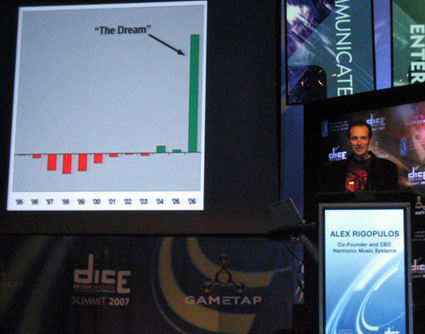
[Image courtesy of Jeff Atwood from Coding Horror]
Success is about a lot of things, but without perseverance none of them matter. Being smart really helps, but it doesn’t guarantee success. Many very brilliant people can’t successfully start companies, and many not so brilliant people have runaway successes. Luck can help, but it can’t stay with you forever. You can only be lucky for so long.
Honestly is there any other one single thing that can help you achieve success as consistently as perseverance? NO! Everything else, luck, money, intelligence, can help, but none of them will be as powerful as perseverance.
Learning to be successful takes time, effort, and energy. It’s the ability to keep on going through thick and thin. It’s the ability to not abandon when most other people would. It’s the ability to learn from your mistakes and continually improve. Or to use my favorite quote from Eddie Cantor “It takes 20 years to make an overnight success.”. I couldn’t agree more.
A great example of overcoming perseverance comes from the company Harmonix, makers of the wildly successful and famous video game Guitar Heroes. It took Harmonix 10 full years of development and improvements to build this series of games and achieve success. The graph at the top of this post really shows you the perseverance the folks at Harmonix had to keep pushing on. Sure they had revenues, but they also had negative profits. It would have been very easy to quit, but they kept on pushing.
If you ask most people today about the Guitar Heroes series, they’ve only learned about it in the last while with the release of Guitar Heroes 2. That’s when it really started to get some traction. And recently with Guitar Heroes 3 and Rock Band going mainstream, just about everyone knows about them. How many of you played, seen, or even heard of the original Guitar Heroes (version 1) game?
As a side note, Harmonix developed Guitar Heroes 2 for RedOctane, but not the latest Guitar Heroes 3 game. Without getting into the details, Harmonix was acquired by MTV in 2006, and as part of its first project it developed the other major competing game to Guitar Heroes 3 called Rock Band (Guitar Heroes 3 was developed for RedOctane by another company). Rock Band of course became a large success. A major part of their success with Rock Band was because of all the knowledge they had acquired over their years learning how to build Guitar Heroes, Dance Dance Revolutions, and so on. In other words, because of their perseverance. Perseverance really pays off!
I’ll give you another great example, my own company LandlordMax. If you look at the graph just above, it’s a 12 month moving average of our sales revenues (with the first 12 months missing to be able to get the first average). As you can see, we had almost no growth in 2005 according to this graph. Although I could’ve sworn we did, it tells me otherwise (a moving average graph acts as a way to smoothen the data points).
In other words, it basically took us two years to really get LandlordMax going. Sure it’s not nearly as long as ten years for Harmonix, but how many of you would keep at it for 2 years before seeing any significant growth? That’s with 3 major version releases (not counting the initial 1.00 release).
Perseverance is the key to success! It took us a while to get the “right” features into LandlordMax, to fully understand what our users really wanted. It took Harmonix many years to get the “right” music software, the “right” polish. Once they understood it though, it didn’t take them very long at all to create another completely new game (Rock Band) and achieve the same success with it. Learning how to succeed takes time and perseverance. It takes commitment and effort.
As the movie Run Fatboy Run asks, what will you do when you hit the “wall”? Will you push through it or give up and go home?
PS: If you haven’t already read it, I recommend reading Jeff’s somewhat related post Living the Dream: Rock Band. It’s about the importance of putting the user’s goals at the forefront of your business. And it’s also the inspiration that initiated this post.
Permalink to this article Discussions (6)
Interview the Pros – Update
As many of you already know, I’m in the process of getting a book published called Interview the Pros: What does it take to create a Successful Blog? which consists of 40 interviews with many prominent bloggers and will be available on Amazon, Barnes & Nobles, and so on. The good news is that I’ve just finished sending the final review/edit of the book to my publisher earlier this week. I’m now in the process of working with them on the book’s cover copy (the wording on the cover, back, inserts). We’re also in the process of working through the illustrations for the cover, and what have you. As far as I understand, this next step could take up to 5 weeks.
The book’s already been assigned it own ISBN, which is pretty cool! It will be available in both hard cover and soft cover, In addition to this I’m in the process of building up a website for the book which should be available for its release. I’d share the link but it’s not yet ready.
All in all things are progressing. It’s not as fast as I’m used to in the blogging and technical world, but I’ve been informed that for a traditionally published book is pretty fast, which is good news.
I’ll keep you posted with updates as they become available.
For those of you who are new to this blog (the readership is growing quite rapidly), the list of people interviewed for the book are:
- Aaron Wall from SEO Book
- Ades Tynyshev from Ades Blog
- Al Carlton from Coolest-Gadgets.com
- Alex Papadimoulis of Worse Than Failure
- Andy Brice of Success Software
- Anita Campbell from Small Business Trends
- Asha Dornfest from Parent Hacks
- Ben Casnocha
- Ben Yoskovitz of Instigator Blog
- Bob Walsh author from 47 Hats
- Dan Lyons from The Secret Diary of Steve Jobs
- Dane Carlson from Dane Carlson’s Business Opportunities Weblog
- David Armano from Logic+Emotion
- David Seah
- Derek Semmler
- Dharmesh Shah from On Startups
- Eric Sink
- Ian Landsman of Userscape
- James and Alex Turnbull from Google Sightseeing
- JD from Get Rich Slowly
- Jeff Atwood of Coding Horror
- Jeff Clavier from Jeff Clavier’s Software Only
- Jennette Fulda from Half of Me
- Jenny from 101 Reasons I Hate Being Fat!
- Jessamyn West of Librarian.net
- Joel Cheesman from Cheezhead
- Jonathan Snook
- Manolo from Manolo’s Shoe Blog
- Neil Patel from Quick Sprout
- Pamela Slim from Escape from Cubicle Nation
- Patrick McKenzie from Micro ISV on a Shoestring
- Penelope Trunk of Brazen Careerist
- Ramit Sethi from I will Teach You to be Rich
- Rob Walling from Software By Rob
- Rohit Bhargava from Influential Marketing Blog
- Seth Godin
- Stephane Grenier of Follow Steph (me)
- Steve Rubel from Micro Persuasion
- Trent Hamm from The Simple Dollar
- Yaro Starak from Entrepreneur’s Journey
Permalink to this article Discussions (3)
Top 16 Podcasts
Recently I purchased myself an iTouch, and I have to say it’s an amazing little device. My only complaint so far is that I purchased the 16Gb rather than the 32Gb (I always seem to be running out of room because of all the podcasts I load up on it). Actually, that’s not really true, I’m finding that iTunes on Windows is another of my complaints, it’s an extreme CPU hog. Just downloading files often brings the CPU usage to 100%. Who knows why…
In any case, here’s my current list of the best podcasts I was able to find:
Marketing
Software Development
- IT Conversations
- Software Engineering Radio
- StackOverFlow
- Java Posse
- IBM developerWorks
- UIE Brain Sparks
Technology and Science
General
Some of these podcasts are obviously better than others, but overall I’ve enjoyed almost every podcasts from every single one of these sources. If I had to pick my favorites, they would be Ted Talks (the speakers at Ted are just amazing – I can’t say enough about these video podcasts), Internet Marketing Insider, StackOverFlow, Software Engineering Radio, and Java Posse. I’d also like to include IT Conversations in this list but it’s still too new to me. And don’t get me wrong, the others are great, these just happen to be the best of the best.
And if I’ve missed your podcast, or if you know of other great podcasts, please don’t hesitate to comment below. I’m always on the lookout for great podcasts, especially video based podcasts (video casts).
Permalink to this article Discussions (0)
Status Update
Normally in the past I’ve posted updates about what we’re doing here at LandlordMax (as well as my other projects) every six months to a year. Well I’m now going to try to increase that frequency to every 2-3 months. I’m doing this because it forces me to look more frequently at our successes and failures in detail. I always do some checks each month, but by forcing myself to post about the more interesting metrics on a regular basis will force me to look deeper into these metrics. Hopefully finding some great nuggets of information along the way.
Firstly, the most exciting and good news is our traffic metrics at LandlordMax. Our traffic, as measured in by unique visitors, has increased by a whopping of 108% in the last 6 months!! That’s our biggest success as it is translating into more sales.
As well our revenue growth is continuing to be very positive, which is great to see. For those of you who are fairly new here, in early April I posted a graph of our sales revenues over the last few years. In that graph there was somewhat of a spike in 2008. I’m glad to report it wasn’t just a one-off spike for January and February, it’s a consistent growth in revenue. May is already looking like another very big month, possibly the biggest yet!
I decided to also push the data further and generate a moving average graph using a 12 month trailing period (which is why the first 12 months are missing from this graph). I have to admit I was surprised with the results, it’s much better than I expected! As you can see below, we’re definitely moving in the right direction. The real estate bust is not hampering our growth, so it’s not all bad news out there. It’s definitely not all doom and gloom for everyone as you can clearly see.
Some other interesting news, FollowSteph is still growing at a very good pace. In the last 6 months the traffic on this blog has grown by 46% which is great. Although I was hoping to more than double it every 6 months, I can’t complain with this growth rate. The good news is that the RSS feed subscription rate has grown much faster than that, it’s pretty doubled in the same amount of time.
As for the book Interview the Pros: What does it take to create a Successful Blog?, it’s still being edited by my publisher. These things take time, which I have to admit is excruiating for me. I like to have things moving, I’m not a big fan of waiting. But the good news is that the book already has it’s own official ISBN number assigned to it. And most of the book’s cover and back copy is ready to go. It’s going to be available in both as a soft and hard cover book. I’ll let you all know as soon as the editing phase is done, which hopefully will be sooner than later. As well I have to finish the website for the book pretty soon, so I can start to do some pre-marketing. I’ll let you all know when the website is available.
As for the ebook I wrote How to Generate Traffic to Your Website it’s done fairly well overall. I have to admit I was hoping for better results, but this topic seems to be saturated with lower quality ebooks. In other words a lot of people are suspicious of all books on this topic because of some bad experiences, so you really have to push hard to make the sale which isn’t really where I want to be (I don’t want to compete with the long spammy sales letters). However what’s been really interested is that ALL the reviews it’s gotten have been favorable! And each time a review came out there was definitely a spike in sales. But between reviews it’s pretty quiet. So I’m looking into what are my options for the future of this ebook…
Otherwise everything else is moving along very well. The biggest item is that we’re always working very hard on releasing the next major version of LandlordMax as soon as possible, which is coming together very nicely. Just extremely busy as usual.
Permalink to this article Discussions (6)
Why You Should Never Publish Anything Late at Night When You're Tired
I broke one of my own golden rules last night, never ever release or publish anything late at night when you’re tired. If you do the odds of making a mistake greatly increase. And unfortunately last night I broke this rule and a mistake did happen. Luckily for me the mistake was minor, but it helped to reinforce what I should have already known.
You see I published my latest blog entry How Much is it Worth to You? after midnight last night. Although I often stay up much later than midnight, I’ve been going to bed earlier in the last while to catch up on some much needed sleep. In any case, the issue is that I was tired and it was late for me that particular night. Normally in these cases I still go ahead and “publish” the article, but I set the “publish time” to be sometime the next day.
I do this because of several reasons, the biggest reason being that I’ll have had some time to rest and be more awake before it gets publicly released. In some cases I’ve had the time to rethink parts of my post and add more information, sometimes adjust the example, and so on. But overall it’s prevented me a few times from making silly and stupid mistakes.
Well last night I went ahead and pushed the publish button, deciding that I’d break my own golden rule just this one time. And this was my mistake!
Some of you might have noticed it, but I think I caught it before most of you did. What happened is that when I wrote the article I initially left the headline blank. I often do this because I couldn’t think of a good headline at the time I wrote the article. In these cases I just continue writing and come back to the headline later.
Last night I forgot to come back later and write my blog post headline. I left it blank. Above the title being blank, it also meant that my RSS feed subject line was blank. No so bad for a starting blog, but as you get bigger it will be noticed by more and more people. Like I said before, this was not a major issue, but it definitely brought the point of my golden rule home. Plus it’s better to fall and learn (or in this case re-learn) from smaller mistakes than from your larger mistakes.
And don’t think this doesn’t happen to large companies releasing major new versions of their software. To give you an example, early on in my programming career, long before I started LandlordMax, at least 10-15 years ago, I worked for a company where a short workday was 12 hours. And that included weekends (this alone has the makings of a DailyWTF written all over it). As you can imagine we were living in a perpetually tired state. Come release time there was even more pressure to work harder and longer hours. And I did, after all this was very early in my career and I didn’t know any better.
Well the obvious happened. Something eventually went wrong one day. Although I can’t remember the details any more, it’s all a big blur, but I do remember one major release that we’d been working particularly hard to get out the door. We’re talking barely enough time to go home to shower and eat at night (or should I say the wee hours of the morning), never mind sleep. Well eventually we made a mistake, and it was a bigger one. On release night, after what we thought was exhaustive coding and testing, we felt like the current release candidate was ready to go. We decided to release it. We were done. Phew. So we performed one last final build to run one last final test round on (remember this is a time before automated tests were mainstream). And we released it. Exhausted we all went home to catch a few hours of sleep.
Unfortunately within a few hours we were all called right back into the office. Our released version had a major bug. I wish I could remember what it was exactly, but I can’t. To be honest I suspect my brain has intentionally forgotten about it. In any case it was broken and customers were complaining. All hell was breaking loose.
Being already tired really didn’t help to resolve this issue quickly. But lady luck was on our side because it was a very simple mistake and we were able to fix it very quickly (I think it was something like the wrong language properties file was being picked up in the wrong build). So simple a mistake that had we released it in a waken state, well even in a just non-exhausted state, it would never have happened. As soon as we re-released it the phones stopped ringing and we were able to finally get some sleep.
Never ever release when you’re tired. But more importantly, had the issue been a complex or hard one to resolve we would have been in a lot of trouble. Having your development team completely exhausted trying to fix a critical and complex bug during a firestorm is an incredibly dumb place to put yourself into. Would you want to have triple heart by-bass surgery performed on you while you were in the middle of a heart attack by a surgeon who had slept only a few hours in the last week and was living completely on caffeine? Especially when there’s no need for it to be like this.
You can’t win every time, but stack the odds in your favor! Be smart about it. Don’t make my mistake. And you can be sure I won’t break this golden rule again, at least not for a very very long time.
Permalink to this article Discussions (5)
Affiliates – Part 2
In my last post I debated whether or not affiliates are worth it for merchant’s, or in my particular case an ISVs (Independent Software Vendor). I personally believe that they’re worth it, but it takes time and effort to nurture for affiliates to be worthwhile. In any case, I promised I would write a follow-up with more detailed metrics, so here goes.
And for those of you who haven’t read the last post, I concluded with the following tip: If you do decide to go the affiliate route, you’ll find that almost all of your affiliates will fit into two main categories. Those that have 0-1 sales and those that have many sales. To maximize your results from your affiliates I recommend you increase the commissions of your higher performing affiliates, those that prove themselves. This will make them happy and work even harder to get you more customers.
To give you an idea of just how true that is, here’s our sales graph from ShareASale listing our affiliate sales distribution. You’ll find that 86% of our sales went to our Top 10 affiliates as illustrated in the graph below. That’s a whopping majority of the sales!!!
I apologize if the graph isn’t as clear as it can be, but the key thing to note is that the blue signifies the percentage of sales going to the Top 10 affiliates. It obviously dwarfs the rest.
Which made me think, can we get even more detailed metrics? Of course I could look at the raw data, filter it, and then generate my own chart, but luckily ShareASale offers a Bubble Chart of the top affiliates, which you can find below (I have left out the numbers and names of our affiliates for their privacy).
Looking at the above graph, it’s obvious that there are two super affiliates that bring in the majority of affiliate sales! I haven’t looked at the numbers in details, but I suspect they could count for half of all the affiliate sales. Following them there are two medium scale affiliates, and then everyone else. Therefore if we really want to maximize our results from our Affiliate program, we want to work closely with the top 2-4 affiliates. The others almost become noise. Not quite, you can obviously see that there are a number of affiliates getting some sales, but nothing in comparison to the super affiliates.
Which leads me to a bonus and unrelated last chart. I’m mainly posting it because I found it personally very interesting. But before I post it let me give you some context as to why I find it so interesting.
Before you purchase LandlordMax, you can try it for free for 30 days. And then, even after you purchase LandlordMax, you still have 30 days to get a refund if you’re not completely satisfied (for any reason). What does this all mean? Generally our customers have tried it before they decided to buy it, which is great (and I strongly recommend it). In other words they’re already comfortable with the software and know what they’re getting. They’re happy before they bought it. It also means we also rarely need to give out refunds. No company will ever not give out any refunds, but what I’m saying is that our number of refunds is almost non-existent.
That being said, when someone clicks on a link from our affiliates, they have 60 days within which to buy the software for our affiliates to collect their commissions. This gives them time to try the software for 30 days, as well as giving the purchaser time to ask for a refund (to protect us from fraudulent affiliates). Although rare, it balances out everything.
With that in context, below is the graph showing “Return days by gross sale amount”:
Notice anything? The majority of affiliate purchases happen on the same day that they clicked on the affiliate link! But what’s really astounding is that so far we’ve only had one affiliate refund (we actually had two but the second one was because someone accidentally purchased the software twice within 15 minutes). These are people who are buying LandlordMax the same day and not even trying it (sight unseen). This is very different than our internal sales cycle. I wish I could explain this but I just discovered it today when I was looking into the stats for this post. In either case, it’s very interesting and I plan to investigate it some more.
In any case, you now have an idea of what our affiliate sales metrics are like. Hopefully this will give you a better idea of whether it’s worth it or not for your company/website. Just remember that getting those super affiliates does take time, but when you find them they can make it all worth the effort.
Permalink to this article Discussions (6)
What would it cost to build this site?

Earlier this month there was a thread on Joel Spolsky’s BoS (Business of Software) discussion forum asking What would it cost to build this site. Of course it started innocently enough, with a simple statement:
We recently created a startup on which the website is an integral part. Customers rent our product for a specified time period. When you get right down to it, the required features of the website are no different than what would be required of a car rental web site.
Then came the big question:
My question is, what would a ballpark estimate of the cost be?? Again, the fully functional site would resemble a car rental company such as Hertz.com
This is a completely loaded question!!! There will of course be very large price fluctuations amongst the responses no matter who you ask, these requirements are too broad and open-ended. Sadly however I believe that none of them are near the “real” cost to build this website. I think the highest was around $150k if I remember correctly, with many saying that it could cost as little as a few thousand.
WHAT???
Honestly, to create a car rental service just like Hertz will cost a lot more than $150k. Thinking it will only cost a few thousand is insane. Sure you can say you will outsource it for a few thousand, but I can guarantee you what will come back won’t be what you expect. The price has to be reasonable. If it only cost a few thousand to successfully build this system, than all software, and I mean ALL software, would be outsourced. This isn’t the case. I have no doubt it cost Hertz a lot more.
It’s simple to over simplify how much effort is required to build a software application. So much so that the original poster chimes back in with:
There is just no way this would bet done under $10,000. As I said, the site is about 30 percent of what it needs to do. 5,000 lines of code, couple hundred manhours. The manhours are high as we constantly were changing things. But things are a bit more static now and it would be easier to write a detailed spec for he the remaining requirements.
Some additional “Major” components:
Security/Logins. Certain Admin people will be able to do everything. Lower levels will have limited capabilities.
Audit trails for all changes by personnel. If someone changes a record or changes a reservation it needs to be logged.
RealTime Inventory Management. If inventory is low at certain times then site needs to prevent reservations from taking place. Also ensure inventory was the right stuff when it is returned.
Again, think rental car website. I was thinking more along the lines of $50K to $150K.
Just reading these specs I can very quickly see this site greatly increasing in complexity and scope as the details are filled in. Never mind that the scale of users or data hasn’t even been taken into consideration. In any case, I personally don’t believe that this is possible for $150k, it way too optimistic. The vast majority of the posters are thinking of the simplest solution, but I can already see from this slightly “enhanced” description that it’s not going to be the simplest solution. The requirements are only going to grow, and grow fast they will, otherwise known as scope creep in the software industry.
But alas not everyone agrees. Further down someone comments:
I dunno ’bout 100K. My devs do quite a bit of these sites in the $20K to $50K range … but we don’t have a tight enough spec yet do we? Could (maybe) hit the 6 figures once the full spec is known. The folks suggesting a couple of grand, though, they’re smokin’ crack.
Even though this person agrees that building it for a few thousand is too cheap, he still suggests a price that’s way too low. I have no doubt it cost Hertz much much more. I agree that a simple car rental system could be built for around $100k, but that’s a SIMPLE AND MINIMALISTIC car rental system and NOT a replication of a full blown car system as is suggested. Audit trails, realtime inventory management linked to reservation system, reservation system, scheduling, etc. And these are just listed as “SOME” additional “MAJOR” components. This is not a simplistic system. It will grow in scale very quickly. Just look at some of the questions and issues that came up when we decided to add “simple” email to LandlordMax. And that’s just simple email!
So what’s going to happen. The person will eventually settle on someone who says they can build it for around what they think is reasonable. The delivered system either will not work at all, it will be severely delayed, or it will be severeled scaled back in terms of features and modules. Not only that, but assuming something is delivered, I doubt that it could scale up in terms of traffic load. At least not at that price, scalability takes skill and experience, not to mention effort.
And I haven’t even talked about bug fixing! What do you think happens when a software project can’t possibly be delivered within it’s deadline? Depending on how ethical your company, they might just deliver it in an unstable state where “fixes” will be added to the cost of the project after delivery. For example some software consulting firms are know to do this, deliver a project “on time” only to have the “support” costs be higher than the initial project costs. This way they can be the lowest bidder but yet still charge the real cost of implementing the software. And don’t think it doesn’t happen, it’s much more prevalent than you might think.
Software takes time and effort to build. It’s not that simple yet people continue to grossly underestimate the cost of development and wonder why things it’s late, why it’s buggy, why it just doesn’t work. The answer is simple, extremely simple, many many software projects grossly underestimate the amount of effort required. Although many people want to believe it’s more complex than that, it’s really just as plain and simple as that.
Permalink to this article Discussions (2)
49% Discount – Today Only
The ebook I wrote (How to Generate Traffic to Your Website) will be on sale for $15.00, a huge 49% discount from the regular price, on BitsDuJour.com. This discount will be available ONLY TODAY so if you haven’t already purchased it, nows a great time!
The book has gotten many great and raving reviews, of which you can find some of the highlights below. Above the highlights, you can also click on each of the reviewers signatures to read their complete and full reviews.
In addition to this you can read the first 21 pages here for free to see for yourself what the book is like. This sample of the ebook includes the full detailed Table of Contents and a decent portion of the first chapter on SEO (Search Engine Optimization).
Here are some highlights from the many reviews I promised:
It’s remarkably in depth. I’ve only read some of it so far, but what I’m most impressed with is the breadth of the coverage. It pretty much hits on everything someone starting a commercial website needs to think about.
As someone who knows a fair bit about these topics, I found Steph’s down to earth – here’s-what-you-want-to-do-and-why – presentation very complete. His chapters on SEO, AdWords and press releases were some of the best material from a microISV’s point of view I’ve seen to date. Steph pulls from both the experience of his microISV – LandlordMax – and other sources to illustrate and illuminate his points.
The SEO chapter in particular is must reading for any microISV because it focuses on techniques that work today – not 5 years ago – and because it gives you for the time invested a solid set of strategies to start acting on now. MicroISVs seldom have the luxury to dive to the bottom of any of the many subjects we have to deal with.
[…] To my surprise I found that Steph has done an indepth analysis of the traffic generation process and the sheer volume of topics covered in the ebook itself, reveals the amount of research Steph has done to accomplish this book. […]
Honestly, each section and category in itself could’ve easily made into another E-Book and believe me there are lot of e-books out there which deals with only 1/220th of what Steph’s written about in thie ebook, but sells for a higher price.
Steph’s done an amazing job on this ebook, and his hardwork is very evident from the research done, the topics and the sheer depth of information present on each topic.
I can assure you that this is NOT an ebook that will contain information that you’ve already read elsewhere.
Every page is simply worth the money you pay. And it’s cheaper that all those “I’ll teach you everything in two minutes” kind of books. […]
[…] Stephane has actually put a lot of work in the book, making it very easy to read, simple to find what you’re looking for and packed with some serious information about driving traffic to your sites. […]
We consider ourselves pretty savvy, but Stephane’s book has made us look at a few of the methods descibed from a different angle. We’re not saying its all new and revolutionary, we’re saying its got everything you need to know to start increasing your traffic, drastically. […]
Besides tons of written information, Stephane has also made sure that visual examples are placed throughout the book, to make sure you know what he’s trying to teach you. […]
Stephane absolutely knows what he’s talking about, and a lot of this is also coming from his personal experiences as a webmaster. We’ve got nothing bad to say – in fact, looks like we’re going to have to redo our own ebook in the making.
But the selling point for me to get this eBook was the fact that it wasn’t like all those spammy-type eBooks out there. It gives you realistic and proven tips for the long run, rather than the short term deal. Again, the fundamentals that people often overlook. Matter of fact, I have seen quite a few eBooks and all of them tend to only be a few pages long, but not How to Generate Traffic to your Website. This eBook goes into so much depth that it tries to fill as much information within the 138 pages. And so far, every single page has been useful information for me.
So, for all of you guys looking to make money online, you need to build traffic to your site first and foremost and I’m going to go on record and guarantee that this eBook is going to help me in more ways than one.
One of the highlights of the book for me was the sense of balance and perspective that is shown. For example, it’s possible to endlessly tweak your Adwords campaigns or your onsite SEO. However, Stephane repeatly emphases the point that you need to look at the ROI of your time. I also think the fact that he’s not advocating a single traffic generation technique means that he’s not afraid of recommending you weigh up each technique when deciding on how to make your next improvement. One really useful tip he makes is to play to your strengths. For example if you write great content for your blog and you enjoy it, then do more of that rather than trying to become an expert in another technique such as Google Adwords.
[..]In conclusion, How to Generate Traffic to Your Website contains a wealth of really useful information that’s well organised and clearly presented. I can wholeheartedly recommend it to other small online software and non-software business owners. At $28.95 (or a couple of hundred Google PPCs) the ROI will be very quick.
Don’t wait, today’s a great day to bring the traffic to your website to the next level by buying the ebook How to Generate Traffic to Your Website. You won’t get a better price, and it’s only available today at this amazing 49% discount of $15.00. You can buy it right here and now by clicking here.
Permalink to this article Discussions (3)
| « PREVIOUS PAGE | NEXT PAGE » |



